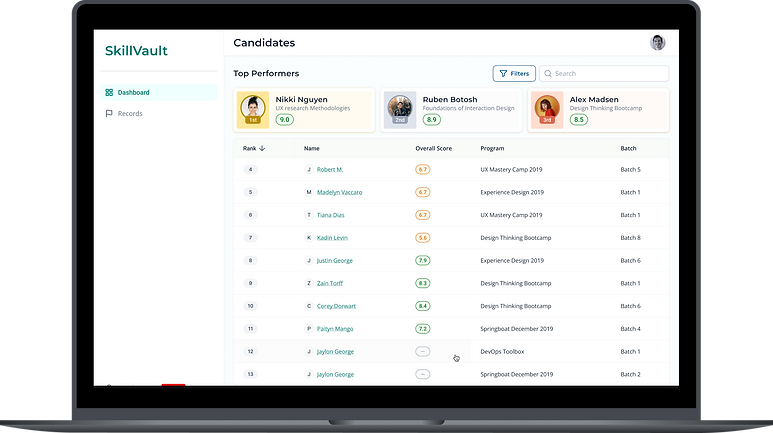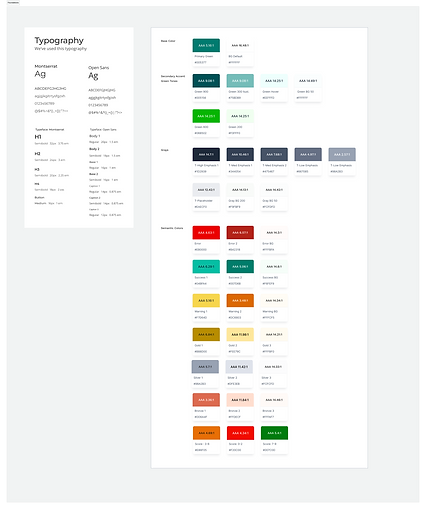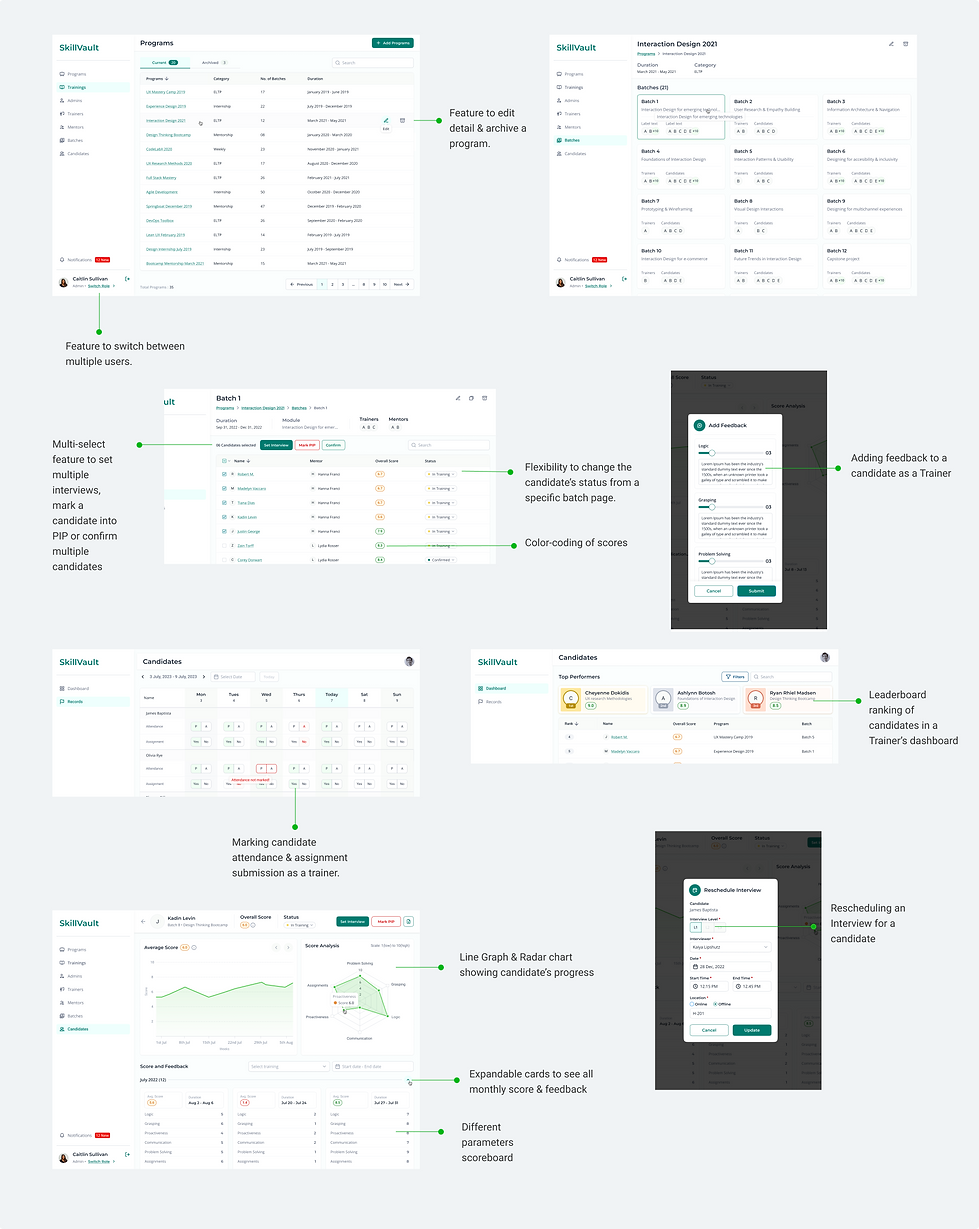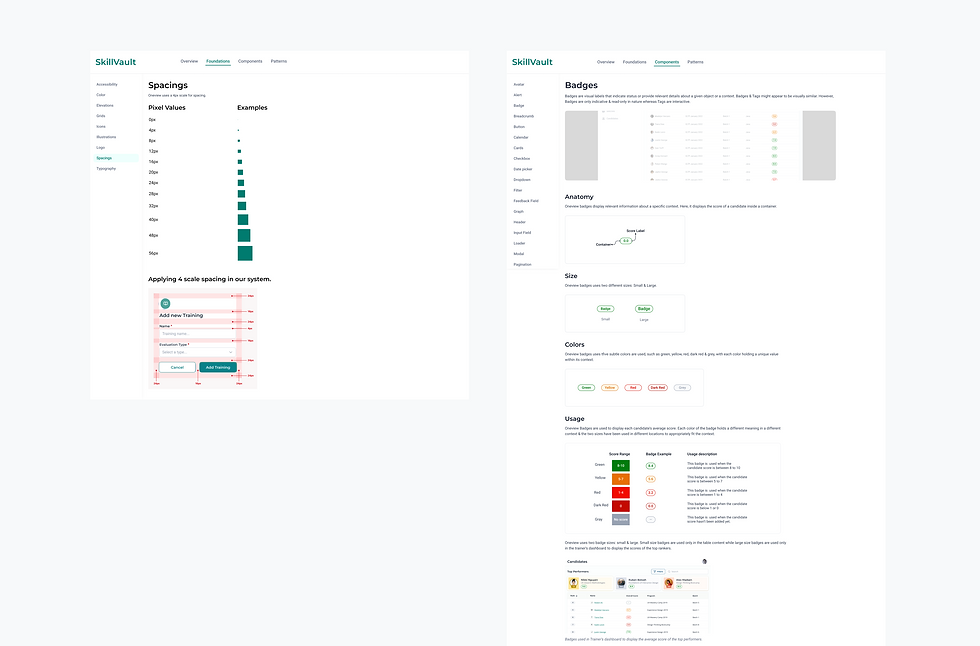.png)
SkillVault
SkillVault aims to become a one-stop location for accessing, evaluating & tracking student's progress & records on educational programs & training
Current Challenges
Currently, the educational program management relies on Google Sheets or manual record-keeping, which becomes cumbersome with multiple sheets and daily tasks.
Design Goals
Intuitive progress Tracker Dashboard
A product to track progress of candidates as well as evaluate them on weekly basis
Effective Program Management system
Managing different programs, courses & trainings
Design for Multiple user logins
Monitor, manage, include trainers & mentors for the courses they offer.

MIND-MAPPING
Conceptualizing the framework.
To get a visually intuitive representation of the complex information, we designed a mind map, which assisted in identifying and prioritising crucial dashboard elements.
RESEARCH
Understanding the current struggles & gathering expectations.
To bridge the gap between product vision & user expectations, we conducted user interviews through which we were able to identify their pain points, uncover their unique needs & specific goals
Actionable Insight #1
Automatisation of scores based on submission of assignments.
Actionable Insight #2
Incorporate a centralized dashboard feature where trainers can easily record and track student assignment completion status alongside attendance records, providing a comprehensive overview of student progress in one accessible interface.

Image sample of our notes collected & insights derived from user quotes during the user interviews
Actionable Insight #3
Implement a feature allowing trainers to attach notes or comments to each score given, aiding in tracking trainee progress and identifying areas of improvement.
Actionable Insight #4
Scores need to be color-coded for ease of understanding.

WIREFRAMING
Early Iterations.
Early concepts of low-fidelity wireframes helped us get a visual clarity before investing in detailed design & development & also ensure that everyone is on the same page.
DESIGN SYSTEM & DOCUMENTATION
Building a design system.
Taking into consideration, the scalability & consistency of the product, we decided to maintain a design system, which will help faster iterations in future verticals of the products & also help in streamlining effective collaboration among stakeholders, developers & future designers as well.
We also decided to maintain a documentation of all the design patterns & components we have used to help future designers catch up on thework

Components Library


Graph Components & their variants
Typography & Style Guide
Final Designs
The final designs went through several iterations. All the flows had to be properly walked through with the copywriter & development team, then ensured that the visual cohesion met its functional requirements.


DESIGN DOCUMENTATION
Maintaing a documentation
We also decided to maintain a design documentation which will serve as a crucial reference for designers, outlining key design patterns, components, and guidelines used in this project. This will facilitate seamless collaboration among team members, ensuring that design decisions are well-documented and easily accessible for future reference and iteration.
Learnings & Takeways
-
Understanding the mental models of the users helps shape design decisions better.
-
The use of capital letters or sentence-casing should be completely backed by user research, for whom you are designing & what works for your system. There aren't any hard-bound rules.